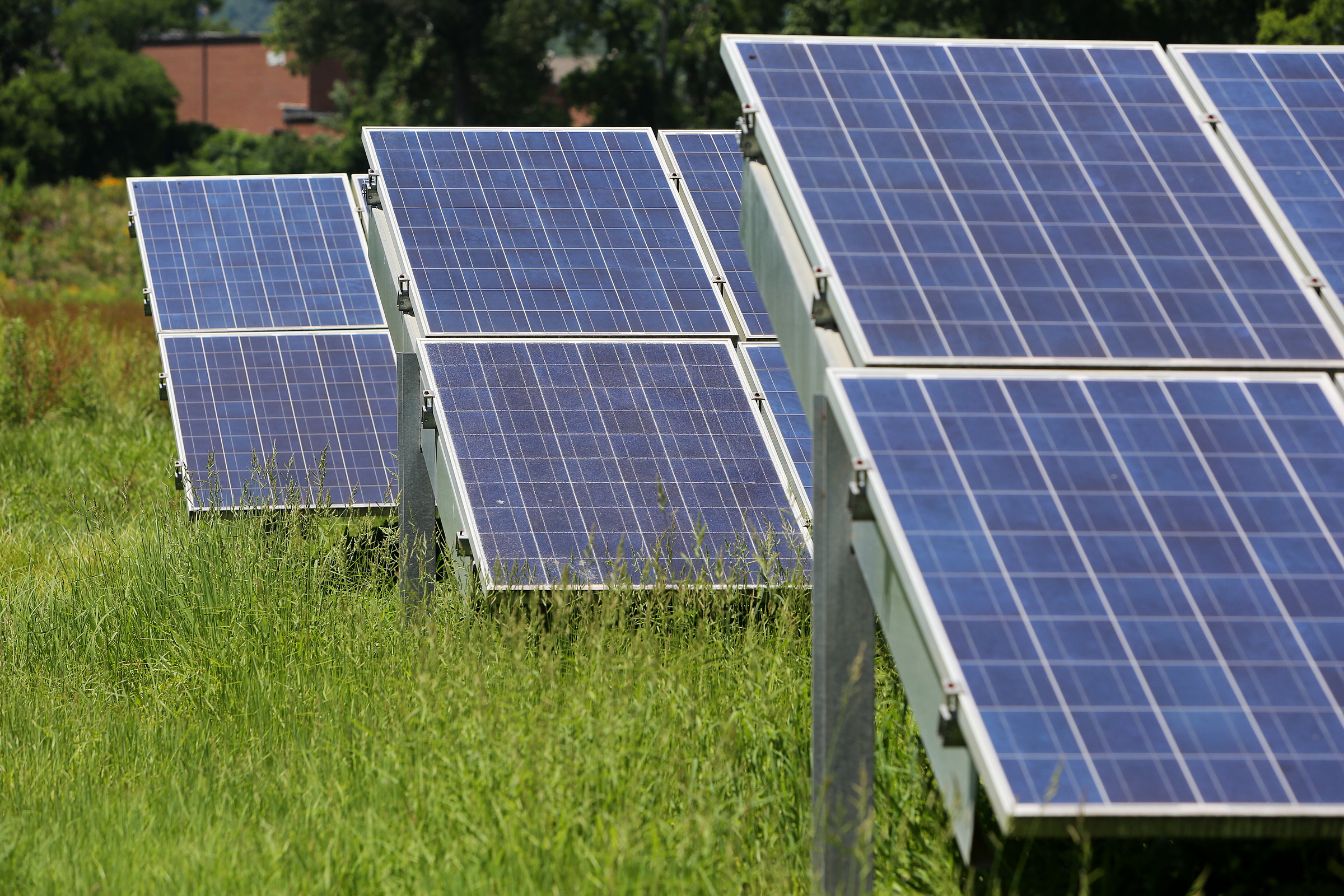The Tennessee Valley Authority, which was an early promoter of solar power in the 1970s and '80s with its Green Power Switch and other research programs, is now lagging most other Southern utilities in turning to the sun for future power.
Despite the addition of major solar arrays at Chattanooga's airport, EPB and Volkswagen, a new study of solar power estimates Chattanooga still gets only 30% as much power from the sun as the average Southern city.
In its third annual report on Solar Power in the Southeast, the Southern Alliance for Clean Energy said Chattanooga has only 99 watts of solar generation installed per capita, compared with an average of 325 watts per capita of solar generation across the entire Southeast.
Bryan Jacob, the solar program director for the Southern Alliance for Clean Energy who authored the 39-page study, said Tennessee's below average share of solar power is due to the Tennessee Valley Authority, which Jacob called a "sun blocker." Jacob said TVA trails other utilities because of its decision to phase out its Green Power Provider program, which once paid premium prices for renewable energy and made the federal utility a national leader in promoting renewable energy.
Stephen Smith, the executive director for the environmental alliance, said TVA cut the price it pays customers who generate solar power below the retail rate "which absolutely killed the market in Tennessee." Despite recent gains, TVA also has built less of its own solar power than many other electric utilities in the Southeast.
The long-range power plan adopted by the Tennessee Valley Authority last year envisions the federal utility and its customers adding as much as 14 gigawatts of additional solar generation by 2040, which would be more than 20 times the amount of solar generation now in the Valley. TVA has established a Green Invest program to build more solar for business customers like Facebook, Google, General Motors and Vanderbilt University that want only renewable power and the utility announced earlier this week it is giving its local power companies more flexibility to build their own distributed power for up to 5% of their power load.
A trade association of solar energy developers in Tennessee applauded the recent changes by TVA to give local distributors the ability to build their own solar farms.
"TenneSEIA believes this is a major change that will allow local communities to take advantage of low-cost solar energy to power their communities," said Chris Koczaja, president of LightWave Solar and TenneSEIA.
TVA spokesman Joshua Thomas Clendenen said even with less solar generation TVA still leads the South in renewable energy generation, thanks to its 29 power-generating dams, and TVA has nearly twice the national average for the share of electricity generated from carbon-free sources such as nuclear, hydro, solar and wind.
"Our diverse generating portfolio has made us the Southeast leader in renewable energy generation, without compromising 99.999% reliability and rates lower than 70% of the country," Clendenen said. "We continue to expand the solar portion of our renewable portfolio by focusing on utility-scale installations, which support the exponential solar growth we're demonstrating at the lowest feasible cost."
But Smith said TVA and the states it serves are not matching the incentives for solar power offered in other parts of the South, which he said undercuts the market for residential and commercial solar projects in the Tennessee Valley. With a surplus of generating capacity after adding more gas-fired plants and nuclear generation in the past decade, TVA also isn't adding as much new generation as some other utilities.
Smith said the need for renewable power from the sun is imminent with the growing challenge of global warming linked to carbon emissions in the atmosphere from the burning of fossil fuels. Smith said temperatures last week topped 100 degrees Fahrenheit in Arctic Siberia, but he said the market is not pricing for the ill effects of carbon emissions.
"The fact that we don't have a price on carbon is an absolute market failure right now and, in my opinion, a real crime," Smith said. "There is all of this undeniable scientific evidence that greenhouse gases are forcing climate change and climate disaster and yet there is not a price for carbon hardwired into the decisions that utilities are making and fuels that they are using."
But even without a price on carbon, solar power is still growing rapidly in the Southeast
Across the 7-state region studied by SACE, the amount of installed solar generating capacity topped 10 gigawatts last year for the first time and it is projected to double again by 2022 with major gains in solar power penetration in Florida, the Carolinas and Georgia.
By 2023, Jacob said solar capacity should top 10% of all electricity generating capacity in the South.
Contact Dave Flessner at dflessner@timesfreepress.com or at 423-757-6340

